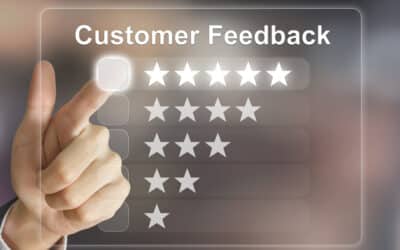Tiered vs Collaborative Customer Support – which is right for your business?
What is the difference between traditional ‘tiered’ customer support, and the newer collaborative or ‘swarmed’ customer support?
In brief, tiered customer support methods break the CS centre into different levels, with queries being escalated upwards to more senior staff if needed. Swarmed customer support, on the other hand, engages the entire team in a collaborative effort to resolve customer queries.
In this article we’ll run through the pros and cons of each system to help you decide which is better for your company, or whether you might want to try a combination of the two.
What is tiered customer support?
In the tiered customer support model, customer requests are assigned different levels or ‘tiers’. So, simple requests will be designated to Tier 1, where they will be handled by generalists who don’t necessarily have in-depth (technical) knowledge.
More complex requests will be channelled into Tier 2, where they will be dealt with by agents who do have more (technical) knowledge and skills. The most challenging problems will be funnelled to Tier 3 where they will be handled by agents with a high level of expertise and (technical) knowledge.
- In Tier 1, which usually makes up about 80% of requests, queries will typically be handled quite quickly.
- Customer requests in Tier 2, because they are more complex, will require more time to resolve.
- Finally, the really complicated and technical requests are escalated to Tier 3, and take the longest to close.
What is collaborative or ‘swarming’ customer support?
Collaborative or ‘swarming’ customer support means the whole CS team collaborates to resolve requests. Every customer care agent has access to all customer requests, and agents accept tickets according to their skill levels and expertise.
Related content: Digital ways to reach (and help) your customers
To work efficiently, the entire CS team needs to have access to all the information they require to resolve the issue in question. For instance, they should all have access to previous interactions with that particular customer, as well as a shared inbox with replies from other support agents. This way, everybody has the benefit of full context to guide them in the next step.
Pros and cons of tiered customer support
The tiered customer support model does have benefits. It offers clear accountability, as specific agents deal with each ticket. Agents clearly understand what they’re responsible for and how long it should take them.
The tiered model can also be closely monitored and improved to serve customers faster and more efficiently.
However, there is an inherent risk in tiered support, in that agents may not maintain a clear sense of ‘ownership’ over problems. The tiered system can be abused to get rid of problems by pawning them off to other more senior agents. Agents may succumb to the feeling that ‘it’s not my problem anymore’ once they have passed the issue on to an agent on a higher tier.
This can increase resolution times, increase customer frustration, and have a negative impact on customer satisfaction and net promoter scores.
Related content: The benefits of offering multiple customer contact channels
Pros and cons of swarming / collaborative customer support
Possibly the biggest advantage of collaborative customer support is that it speeds up resolution times. If a specific issue is ‘swarmed’ by many agents who have different skill levels, it is highly likely that an agent who has the necessary expertise will resolve the issue immediately.
This should result in smaller backlogs, and foster a strong team spirit as everyone feels equally responsible.
However – a significant con of swarming is that the method is unstructured, making it harder to document and track. Also, highly qualified agents can be side-tracked by routine queries.
A great deal of training is required to make swarming work well, and it generally works better for smaller teams. In very large organisations, the method can become a bit chaotic!
Now, having looked at both tiered and collaborative customer support, an interesting question arises. Is it possible to take the best elements out of both systems and combine them?
Why not both?
Remember that the two main considerations for any customer support model should be:
- Will it keep your customers happy?
- Does it work for your business?
With the right planning, significant benefits from the two systems can be combined into an effective collaborative tiered system that:
- Uses tiers to focus primarily on customers and answer their queries fast, efficiently, and clearly. However, the entire customer support team is empowered to collaborate in resolve customer problems.
- Utilises data analytics to glean insights on resolution times and the number of queries each agent is resolving.
- Assigns clear accountability encouraging agents to take ownership of problems.
- Emphasises collaboration throughout all tiers so agents learn from each other and grow through constant mutual engagement.
In conclusion
We understand that deciding which model to choose can be difficult, as it’s so crucial for the future success of your business. If you aren’t sure which model is right for your brand, we’re happy to offer advice.



